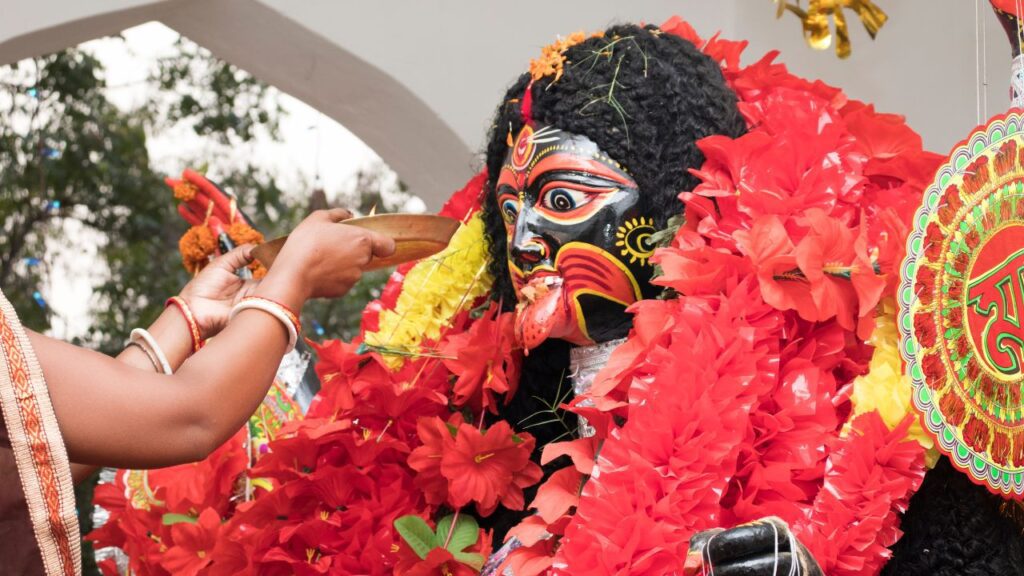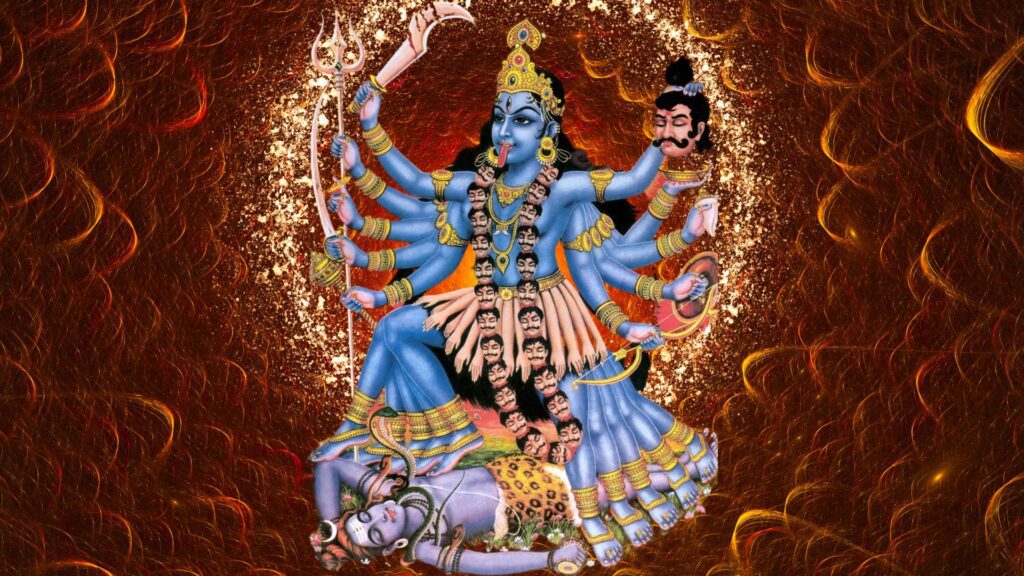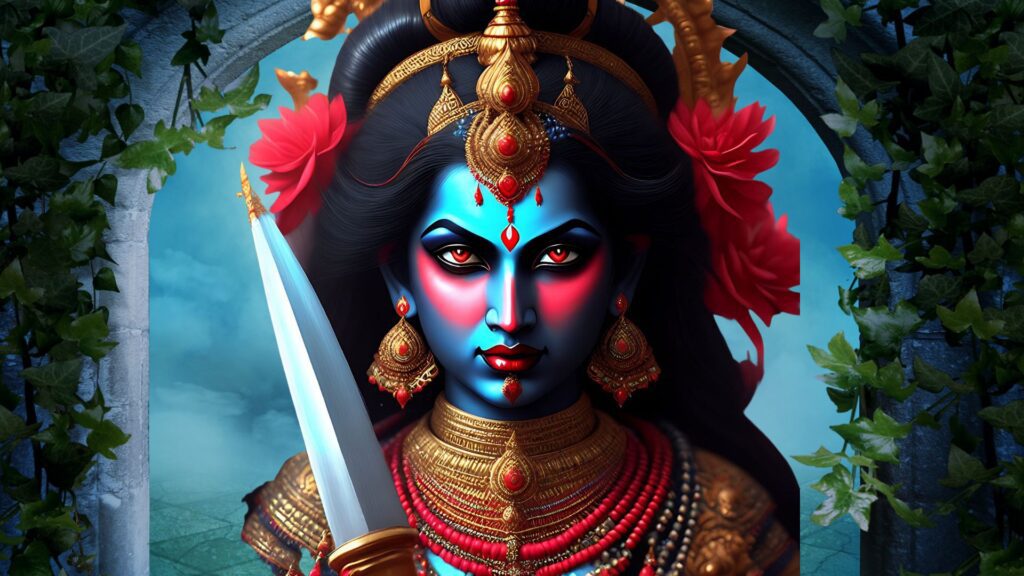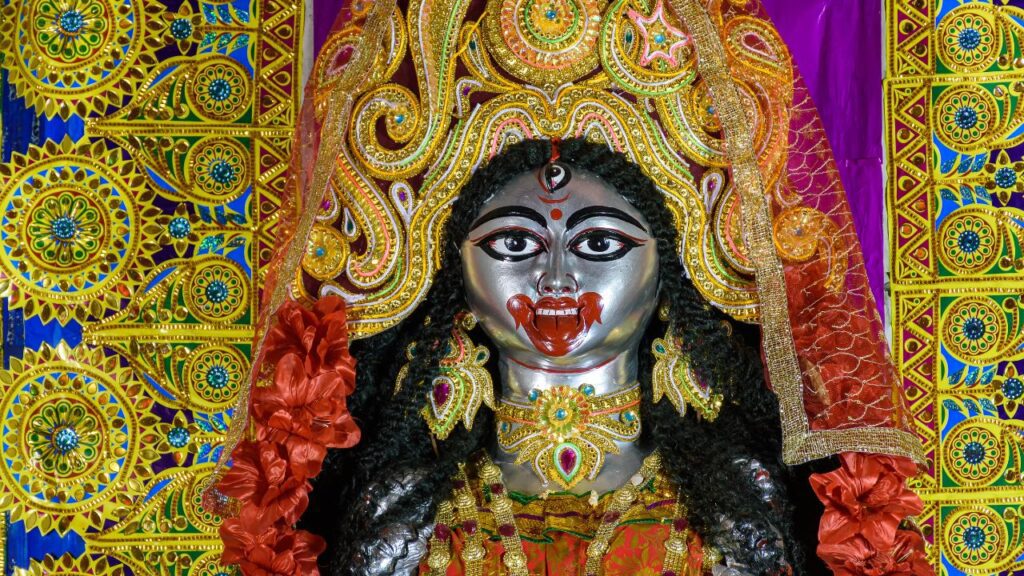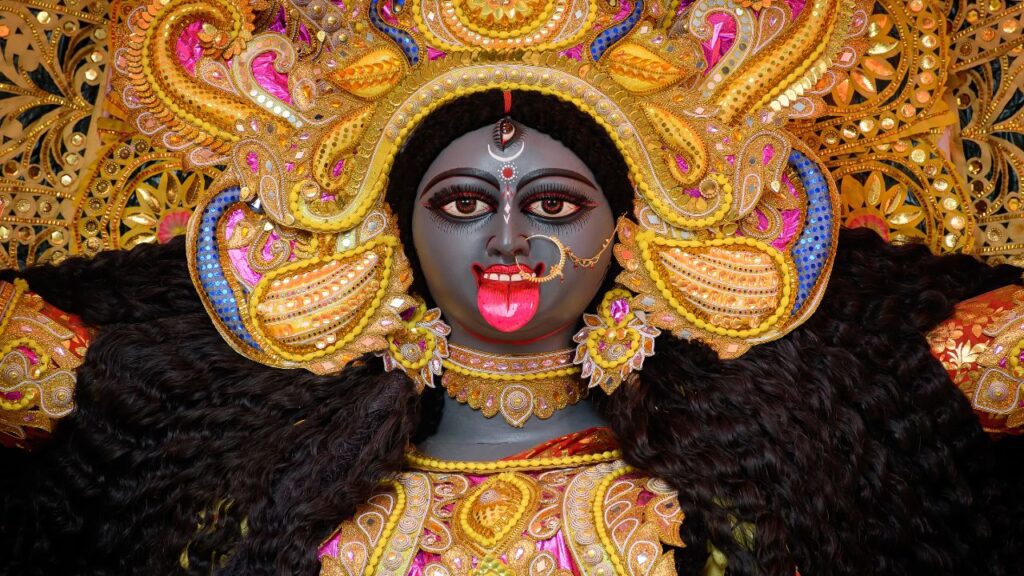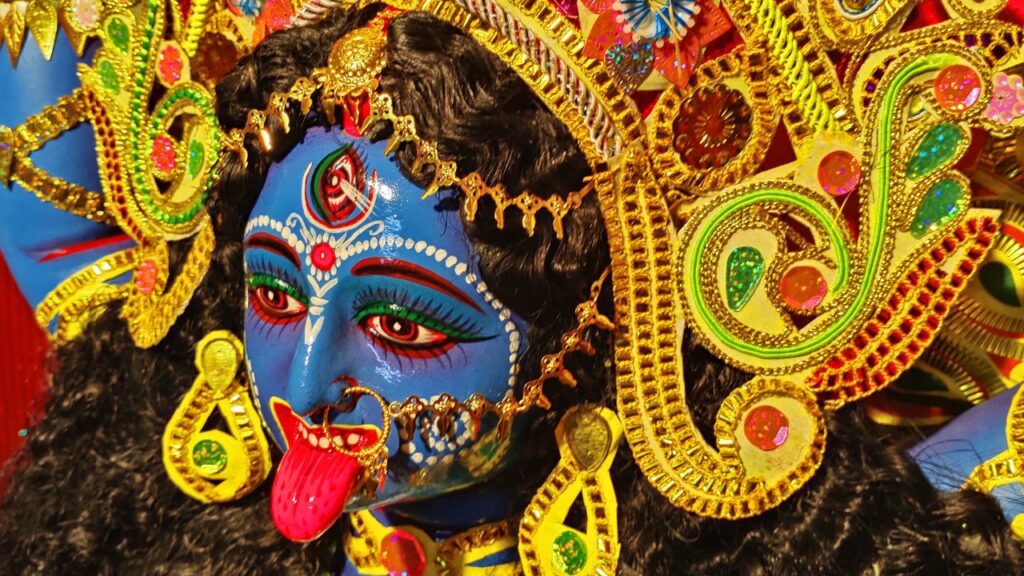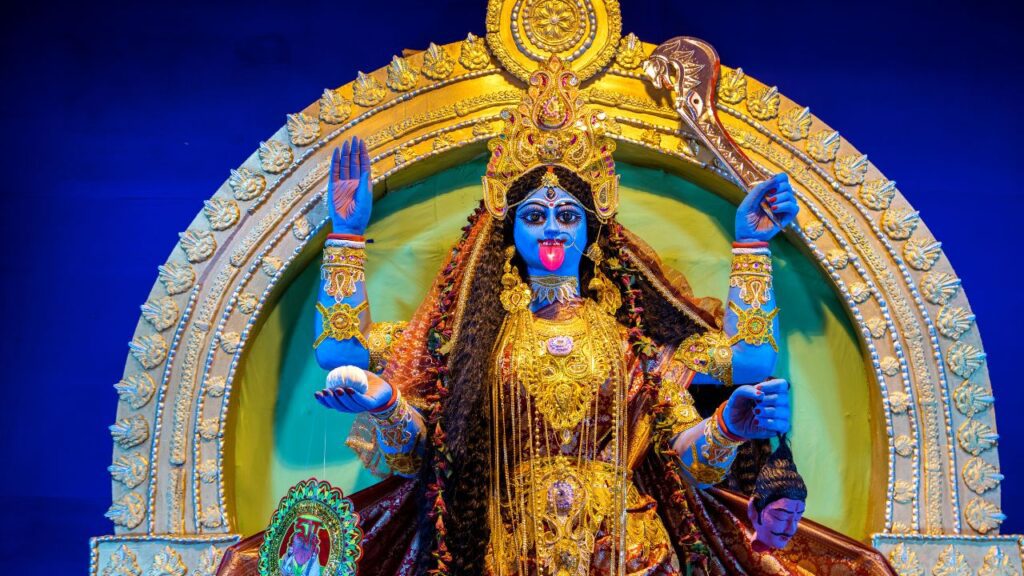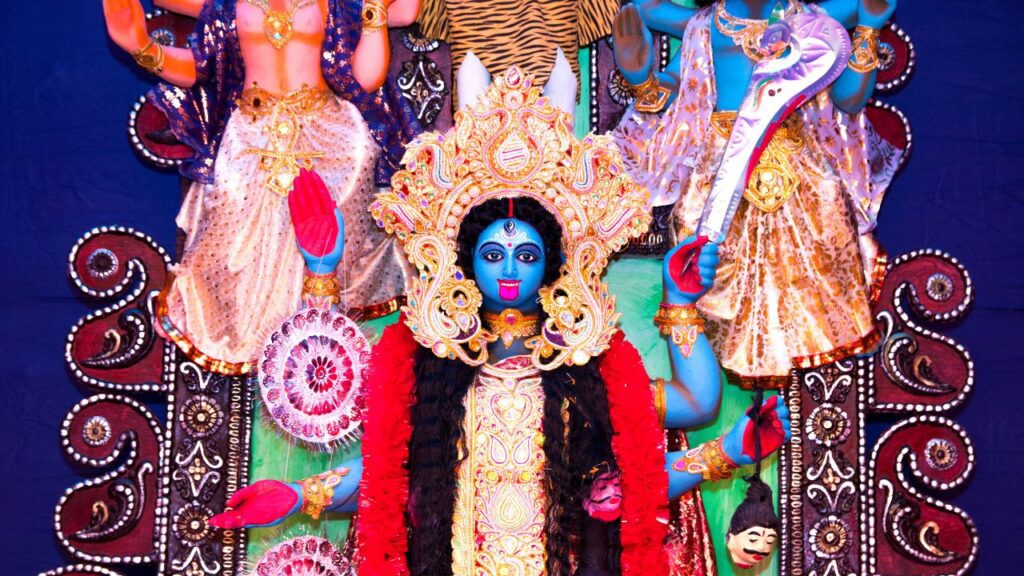Who is Goddess Kali | kali goddess details explained
Introduction
Within the complex fabric of Hindu mythology, Goddess Kali is a particularly interesting and multifarious celestial being. Respected both the terrible and the loving sides of the feminine divine, Kali is the fiery, dark-hued incarnation of the Mother Goddess seen throughout India and beyond. Her beginnings, symbolism, and the respect paid to her offer a remarkable window into the rich and sophisticated spiritual traditions of Hinduism.
Goddess Kali’s beginnings and rise
The Sanskritic traditions progressively absorbed and changed the ancient village, tribal, and mountain deities of South Asia, hence establishing Kali’s roots. Her first significant appearance in Sanskrit literature is in the revered work known as the Devi Mahatmya, from the sixth century CE. This book tells us that Kali came out of the Goddess Durga’s wrath following a bloody conflict with the demon Raktabija. Kali emerged to lap the blood, stopping its creation and guaranteeing Durga’s victory while Raktabija’s blood dropped to the earth created fresh demons.
Another story claims that Kali was formed from the dark skin shed by the Goddess Parvati, so leaving Parvati in her fair-skinned form as Gauri. Kali’s mythology often emphasizes her multifarious character by using this dichotomy of light and dark, good and bad.
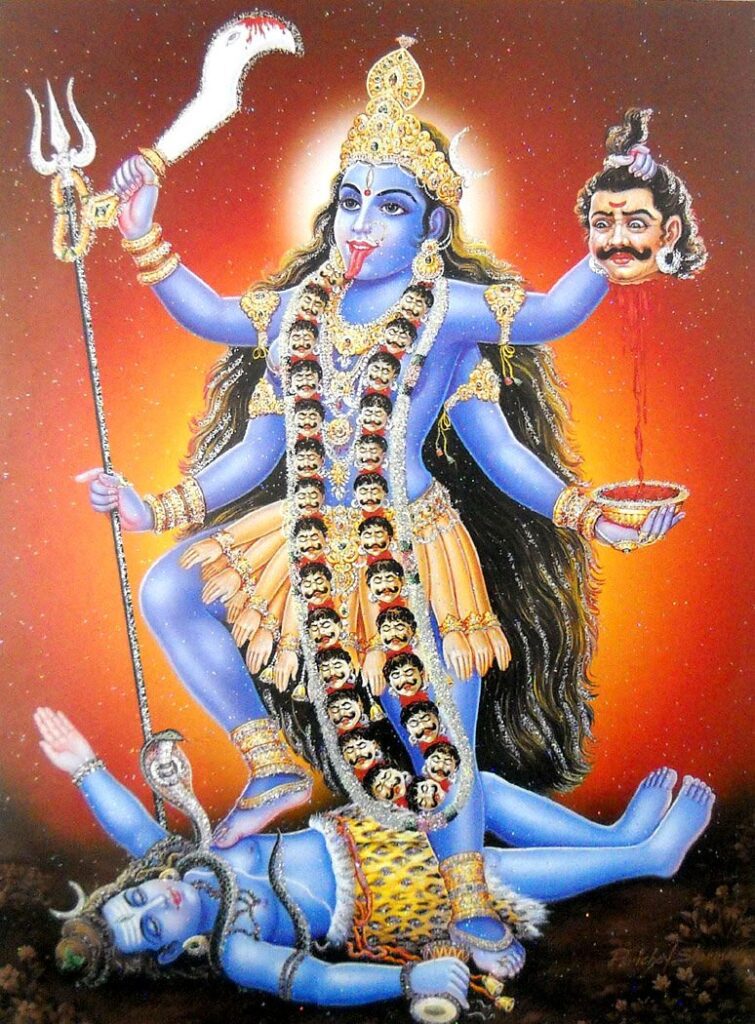
Symbolism and Iconography
Usually shown as a dark or blue-skinned figure, partially or totally nude, Goddess Kali has a long, lolling tongue, many arms, and a skirt or girdle fashioned of human arms. She is seen frequently standing or dancing on her husband, the god Shiva, who lies prostrate under her. Rich in symbolism, this iconography captures Kali’s relationships with death, destruction, and ego dissolution.
Sometimes the extended tongue is taken as evidence of Kali’s surprise and guilt at learning she is stomping on Shiva, her consort. But the long tongue also has deeper roots; a forerunner is the “Long Tongue” ogress of ancient Sanskrit tales, who laps up oblations.
Kali’s skirt or belt of human arms and her necklace of severed heads represent her part as the conqueror of death and the destroyer of ego. She clutches in one hand the decapitated head that stands for the transcendence of time and the victory over the cycle of life and death. Her several arms, meanwhile, suggest her all-encompassing strength and her capacity to wield several celestial weapons.
Kali as the Time, Death, and Destruction Embodiment
Kali’s iconography and story unequivocally establish her as the goddess of death, apocalypse, and time. Assigned to destroy evil and dissolve the ego, she is the dark, ferocious side of the divine feminine. Her connection with death and the disintegration of the physical form reminds me strongly of the impermanence of life and the necessity to get beyond the attachment to the material world.
Kali’s fierce fight with the demon Mahishasura in the Devi Mahatmya is evidence of her part as the conquer of evil. She is seen as an unstoppable force sending legions of female fighters to support her in the battle. Her triumph over Mahishasura marks the success of the divine feminine against the powers of chaos and darkness.
Kali as the nurturing aspect and Mother Goddess
Kali is venerated as a loving, caring Mother Goddess even though she is usually connected with death, destruction, and the darkest sides of the divine. She is considered in certain cultures as the sustainer of life, the source of all creation, and the personification of the ultimate reality.
For instance, the 13th-century mystic and saint Ramakrishna Paramahamsa encountered Kali as the “benign, all-loving Mother,” whose very breath and touch radiated gentle love and the promise of eternity. From this vantage point, Kali stresses her position as the cosmic Mother—the source of all life—and the final haven for her followers.
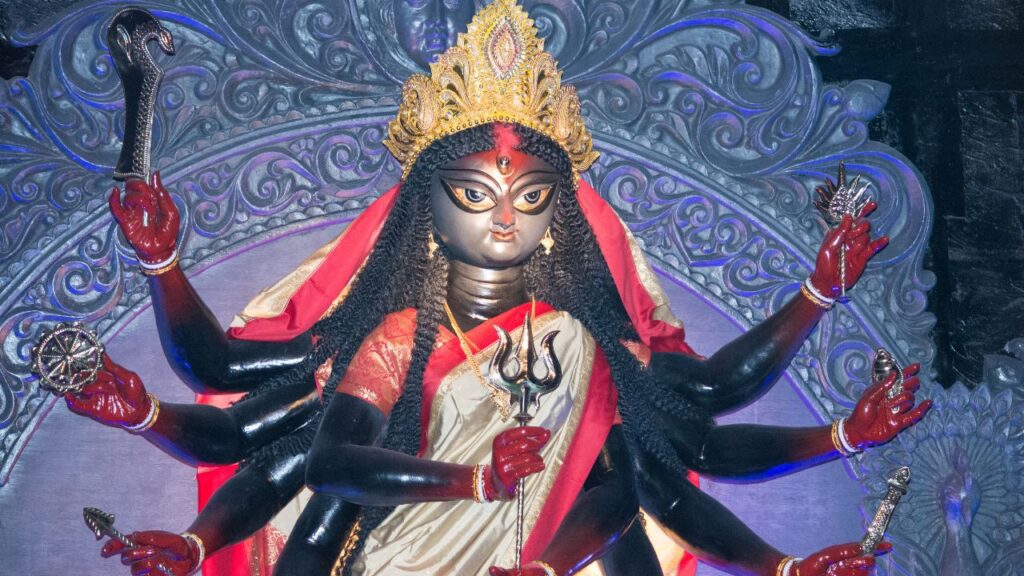
Kali in Hindu Ritual Worship and Mythology
The fabric of Hindu mythology and ceremonial observance is intricately spun with Kali’s presence. She is revered in many parts of India, especially in Kashmir, Kerala, South India, Bengal, and Assam, where she is especially important in the pantheon of gods.
Central to the Shakta tradition, the Devi Mahatmya honors the divine feminine and offers a whole narrative of Kali’s beginnings, struggle with the demon Mahishasura, and function as the last cosmic power. Together with the Durga Saptashati, this book constitutes the center of Kali’s mythology and ceremonial observance.
Temples and Festivals of Kali
Navaratri and Durga Puja are the two major celebrations honoring the Mother Goddess, of whom Kali is most revered. Celebrated in North, South, and West India, Navaratri is a nine-night celebration ending in the triumph of the divine feminine over evil on Dussehra (Dance). Celebrated mostly in Eastern India, Durga Puja marks the epic struggle between Kali and the demon Mahishasura as well as the descend of the Mother Goddess to her mother house on Earth.
Apart from these big celebrations, Kali is also worshiped at the 51 Shakti Pithas, or holy locations, all over India and nearby nations. These temples are said to have emerged from the several body parts of the Goddess when Vishnu dismembered her after her immolation as Sati.
Kali in Movements in Feminism and New Age
More recently, Goddess Kali has attracted much respect and interest in feminist and New Age movements both inside India and abroad. Embracing Kali as a symbol of feminine empowerment, feminist academics and writers have highlighted her brave, unrepentant, and unconventional personality as a counterpoint to patriarchal conventions.
Like followers of New Age movements, who see Kali as a theologically and sexually freeing figure, they have found inspiration in her more unusual and sexually liberated expressions This modern rereading of Kali’s symbolism has contributed to increase respect of the Goddess in the current setting.
Kali and the Duality’s Transcendence
The idea of transcending dualities drives Kali’s intricate symbolism from its core. Remind her followers that the ultimate reality is outside the boundaries of good and evil, life and death, or any other polarities; she stands for the disintegration of the ego and the illusion of separateness.
Kali’s capacity to represent both the horrific and the loving sides of the divine feminine emphasizes the point that the divine cannot be limited to one, set shape or interpretation. Her presence inspires her followers to let go of attachment and anxiety, to embrace the whole of life, and finally to reach the state of moksha, or release from the cycle of rebirth.
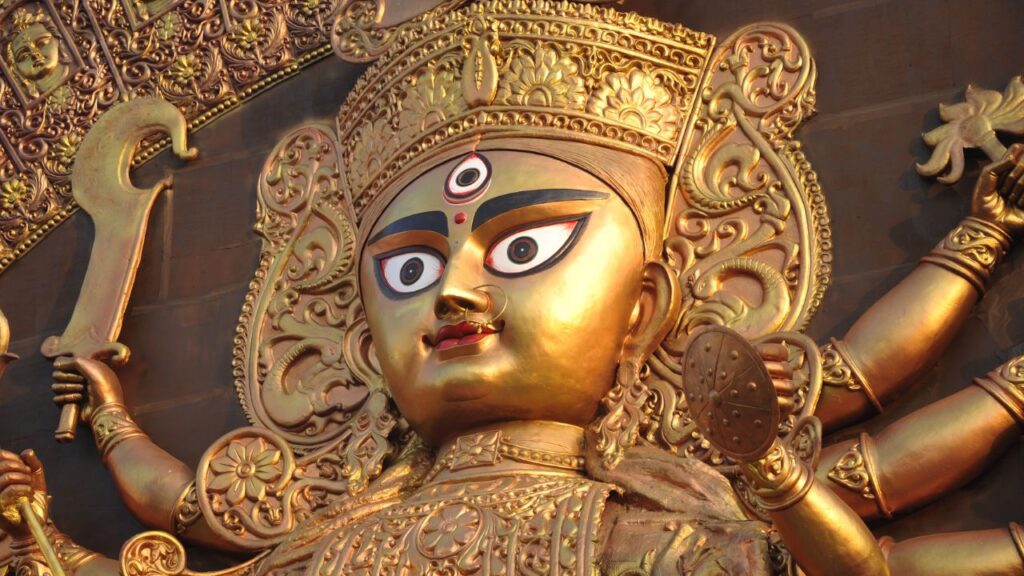
Kali in the Spiritual Landscape
Goddess Kali still enthralls spiritual seekers and practitioners all around in the present age. Her continuing popularity stems from her ability to capture the dynamic, always shifting character of the divine and the human experience.
The figure of Kali reminds us strongly of the necessity to face the darker sides of life, to go beyond the constraints of the ego, and to welcome the transforming power of the divine feminine as the world struggles with the complexity of the twenty-first century. By means of her example, followers are inspired to develop the spiritual fortitude, courage, and resilience required to negotiate the demands of the contemporary society.
Kali’s Paradox and the Way to Enlightenment
Goddess Kali is the embodiment of death and the provider of life, therefore embodying a great paradox: she is both the destroyer and the nurturer. Her job as a spiritual guide revolves around this dilemma as one might reach the greatest state of enlightenment by means of the confrontation and transcending of dualities.
As told in the Devi Mahatmya and other Hindu writings, Kali’s path represents the personal spiritual development. The fight with the demon Mahishasura represents the continuous effort to get beyond the ego and the false sense of separateness. Kali’s triumph marks the last one in which the divine feminine conquers ignorance and darkness.
Devotees can start their own transforming trip by embracing Kali’s teachings and the lessons implicit in her mythology, therefore releasing the chains of the ego and finally obtaining the state of moksha, or emancipation from the cycle of life and death.
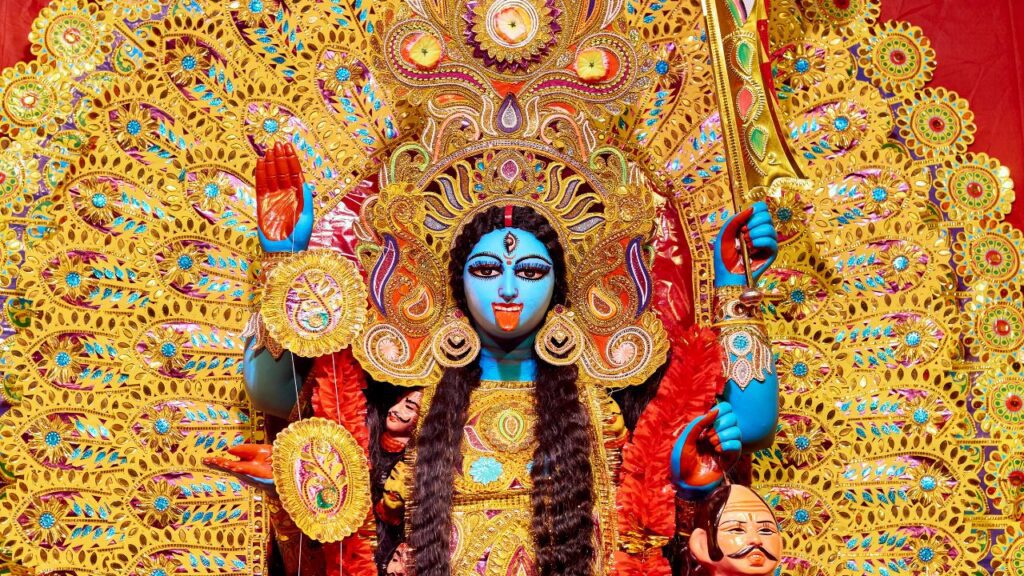
Conclusion
In the complex fabric of Hindu spirituality, Goddess Kali is a great and multifarious character. Her beginnings, symbols, and mythology expose the depth and complexity of the divine feminine—including both the terrible and the loving facets of the universal Mother.
By means of her example, Kali inspires her followers to face the darker aspects of life, to overcome ego constraints, and to welcome the transforming power of the divine. She reminds us that actual emancipation comes in the acceptance and integration of all facets of the human experience as a symbol of time, death, and the breakdown of duality guides on the road to enlightenment.
Kali’s continuing attraction in the modern spiritual scene enthralls and motivates seekers from many backgrounds, therefore highlighting the ageless wisdom and relevance of this mysterious and magnificent Goddess.
